


 This book is dedicated to my family:
This book is dedicated to my family:
To my wife, Linda, thank you for your constant support through the peaks and valleys of life. Without your guidance and strength, none of this would have been possible. My sons, Christopher and Nicholas, were equal partners on this project. I couldnt have done this without your help. You guys are golden! 
Contents



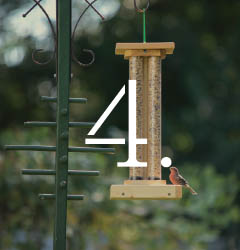
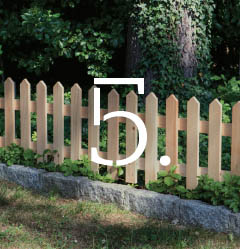
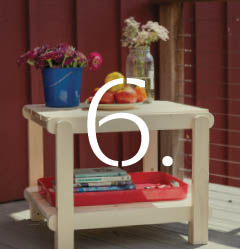




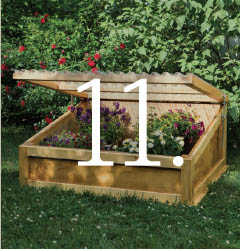
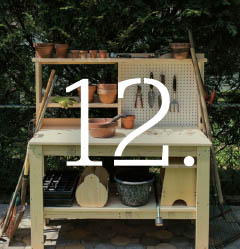
Introduction
Take a pencil, draw something on the wood, and cut it outthese were my only instructions. My cousin Marie, who watched my brother and I during our summer breaks, had run out of interesting things for us to do and offered to take us to PS 83 in the Bronx for an activity.
The room, PS 83s cafeteria, was packed with kids, and it smelled of freshly cut pine. A tall boy took me by the arm and literally swung me into a chair. He grabbed a piece of wood and then handed me a saw. His instructions were brief and to the point. As I turned back to ask for help, he looked me square in the eye and said, Build it yourself. At first I was totally confused, but then I realized the only option was to watch what everyone else was doing and then cut.
Thats how it all began A big part of that summer was my close relationship with my grandfather Francesco. I followed him everywhere he went, and we usually wound up at his workshop or in his vegetable garden. His workshop was filled to the rafters with all types of hand tools, gardening supplies, and a lot of miscellaneous items. Since he had gotten older, his garden, which had been about three acres, had shrunk to a third of its original size. My grandfathers vegetable garden was the place that united our family. Those gatherings turned into social events that lasted into the night.
It was exciting to see everyone come together to harvest the vegetables and to squeeze the grapes into wine. We spent a lot of hot days hammering leftover pieces of wood together to support his grapevine. His real pride and joy, though, was his fig tree. It stood two stories high, and to harvest its fruit, he had to build a scaffold around it. When we worked together, my grandfather would encourage me to take my time. Patience and persistence were the two greatest lessons he taught me.
I cant remember a day we werent building or growing something. I learned so much of my craft by watching him. He would use whatever he had on hand to build a project, and most projects were developed as we went along. I rarely saw him use a ruler. As a project started to take shape, he would take a step back, tilt his head, take a quick glance, and say we needed to do more. Repurposing old projects into new ones was something we did every day.
It was second nature to him. What I learned best from him was to build with whatever wood or tools you have on hand and to trust your instincts. I also got a lot from the well-thought-out and organized format of the master carpenter Norm Abramss PBS series The New Yankee Workshop. I would videotape the show so that I could play it back and study all of the tools and techniques from each episode. The early years of that show shaped how and what I build today. As my professional career began to progress, I was challenged with all types of projects, and as they became more complex, I needed a better source of information.
The internet was in its infancy, and the best resources were either the public libraries or bookstores. So I compiled a collection of books and magazines that included a variety of styles and techniques. I would learn the techniques needed for a project, compile the information, and then teach it to my staff. As my company and staff grew, I began developing a teaching and learning environment. When hiring staff, I always tried to find people that had no previous woodworking experience but a strong desire to learn. As my career took twists and turns, I found a home at Wave Hill, a public garden and cultural center in the Bronx.
This is where I established a series of novice woodworking classes. All of the projects and techniques were created for beginners, with no experience required. A friend of mine once asked me, What is so exciting about introducing novices to woodworking? I see novice woodworkers as blank canvases ready to be painted. They havent yet learned any bad woodworking habits. When something does go wrong, I dont jump in to fix their project for them. Instead, I challenge them by asking the question: Why do you think this happened? This helps them take ownership of their project and they gain confidence in their ability.
To ease any early apprehension, I tell stories about how I started in woodworking or the funny mistakes Ive made; they reciprocate with fond memories about a piece of furniture their great-uncle or grandfather made and how much they cherish it. Sometimes they will even confess to me about a failed project, or ask my advice about how to repair something. At each class, we become so engrossed in what were doing that we block out whats going on outside the room. As they move closer to completing their project and start to see it take shape, finishing becomes the high point of every class. As we wrap up each class, congratulations are shared with everyone, telephone numbers are exchanged, photos are taken, and Facebook pages are updated. Seeing my students beam with pride while standing next to their projects, always looking forward to my next class is the reason I teach woodworking to novices.
Next page

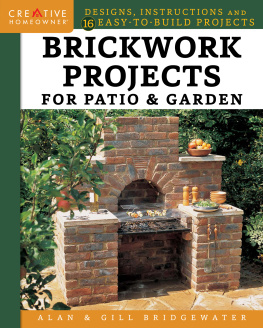

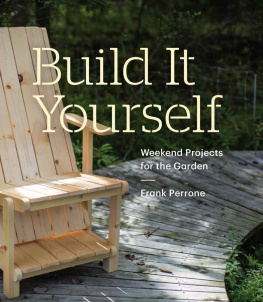
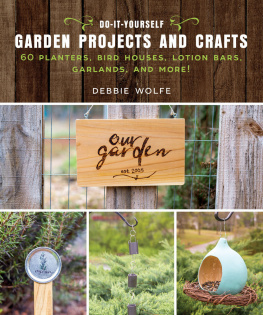
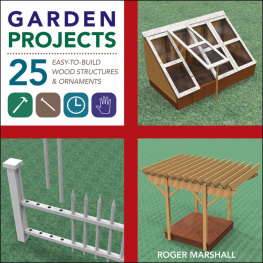
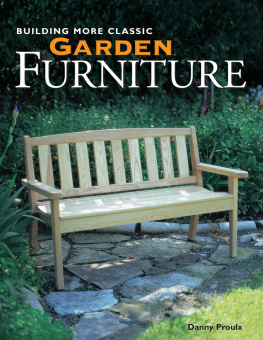




 This book is dedicated to my family:
This book is dedicated to my family:










